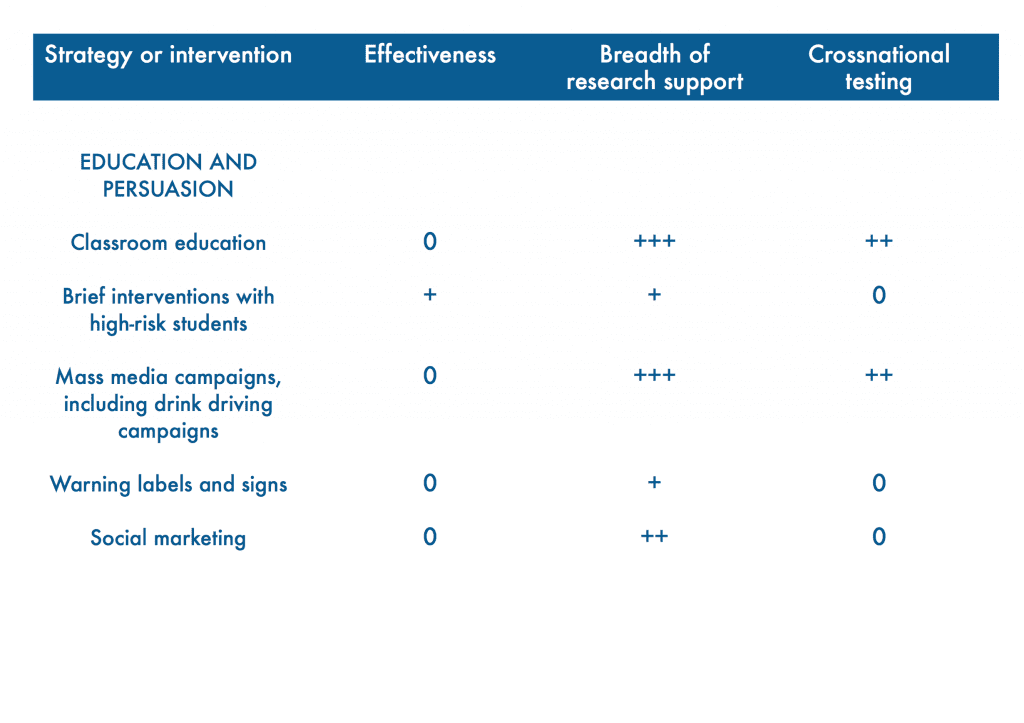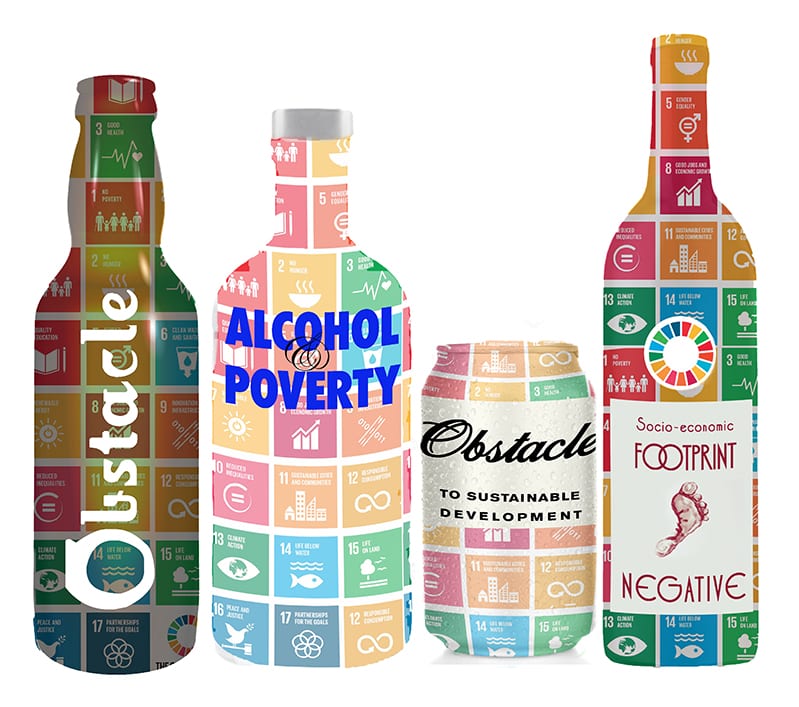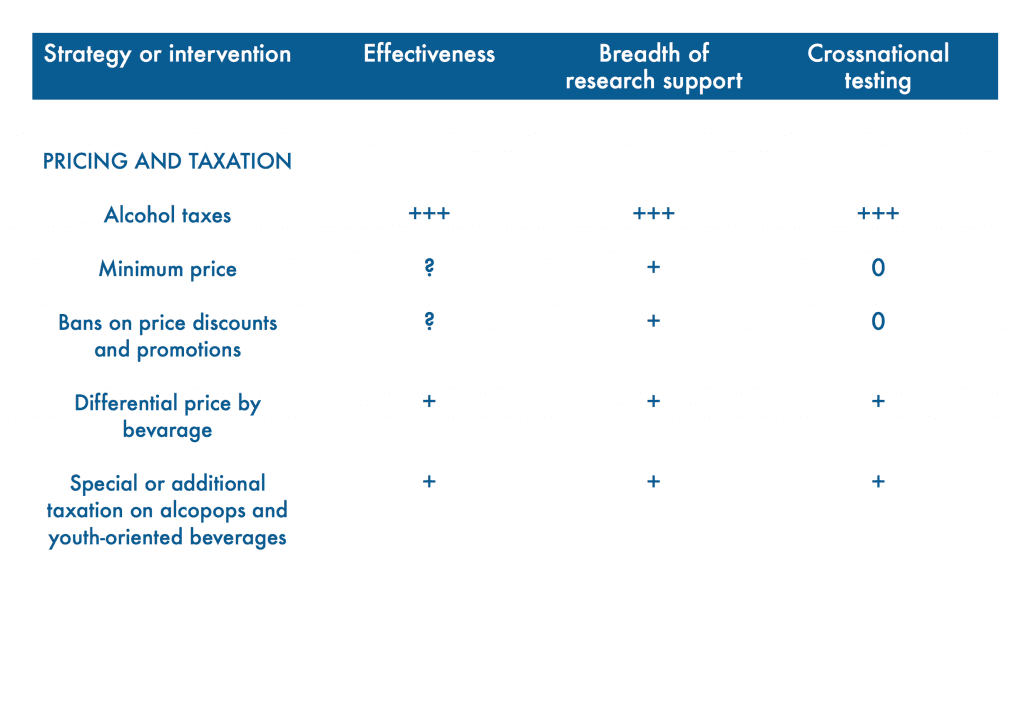Staggering levels of consumption, harm and suffering
The world has an alcohol problem. And so, almost every WHO region has an alcohol problem. But the region with the biggest issues of all is the European one.
That’s the straightforward problem description of what’s at stake at the 67th Regional Committee Meeting of the WHO European region. In Europe, alcohol is a major burden on individuals, families, communities, the economy and societies at large, posing a giant obstacle to sustainable development. The “Progress report on the implementation of the European Action Plan to Reduce the Harmful Use of Alcohol 2012–2020” highlights the ongoing crisis. And a crisis it is.
The WHO European Region has the highest adult alcohol consumption of the six WHO regions. In 2014, the European average for alcohol consumption for adults aged 15 years and older was 10.7 liter of pure alcohol.
That’s a staggering amount.
But the level of alcohol use becomes even more alarming if you consider this: with regard to alcohol users only, the average per capita consumption in 2014 was 19.4 liters of pure alcohol for men and 12.9 liters for women. Among those, the new progress report shows that almost 32% of men and nearly 13% of women experienced incidents of heavy episodic alcohol use in the past month. Almost 13% of men and 3% of women suffer from an alcohol use disorder.
And suffer they do.
In fact, the suffering and quality and healthy years of life lost, goes even beyond the individuals who are using alcohol. It also affects children, families, workplace colleagues, communities and fellow citizens. We alll bear the burden of this level of alcohol harm.
Lacking political commitment, leadership and action
In such a dire situation, the question arises: are countries in the European region doing what can and what they know works, to prevent and reduce alcohol harm?
There some good news and there’s a lot of bad news.
The number of Member States with a written national or subnational policy increased from 30 to 38.
I’m glad to note a few key developments that go into the right direction and that show not everything is bad:
- The number of Member States with a blood alcohol concentration limit of 0.5 g per liter or less for drivers in the general population increased from 42 to 51, and random breath-testing is now used by 46 Member States, compared to 27 in 2010.
- The number of Member States with a minimum age limit of 18 years for off-premise sales of alcoholic beverages increased from 31 to 43.
- The number of Member States with legally binding regulations on alcohol advertising increased from 42 to 47.
- The number of Member States with legally binding restrictions on alcohol product placement increased from 31 to 36.
- The number of Member States in which the level of taxation for alcoholic beverages is adjusted for inflation increased from 7 to 13.
- A few countries (Belarus, Kyrgyzstan, Republic of Moldova, Russian Federation, Ukraine and Uzbekistan) have reported that they impose a minimum retail price on alcoholic beverages. Scotland has passed legislation for the introduction of a minimum pricing policy but is being attacked viciously by the alcohol industry. Poland recently decided to introduce minimum pricing.
And I think it’s important to commend the efforts of the WHO Regional Office. They worked hard to develop a novel alcohol policy scoring system. This will be useful in evaluating the effectiveness of alcohol policy interventions in countries. The WHO Regional Office is set to develop a profile for each of the 10 action areas of the European Action Plan for all Member States. This can provide guidance in implementing new policies to decrease alcohol harm.
Clearly, governments do understand the need to tackle alcohol harm. Only, they do so with cost-ineffective and low-impact measures. For example, the number of Member States that had conducted national awareness-raising activities increased from 39 to 51. But education and persuasion measures are not effective in bringing about behavior change. And behavior change we need in Europe to achieve the 10% reduction target of per capita alcohol use by 2025.
Need for updates, state of the art alcohol policies on country level
Analysis of the implementation of the WHO Global Alcohol Strategy indicates that the European region had the highest level of activity to increase scope and intensity of government action to curb alcohol harm. For instance since 2010, 27 countries of the region have increased alcohol excise taxes.
But 12 Member States do not have an excise duty on wine. And only 13 Member States reported that the level of excise duty is regularly adjusted for inflation.
Troubling is also that among the 8 countries worldwide that have increased subsidies for the alcohol industry, five are from this region.
Since 2011, when the European Action Plan to Reduce the Harmful Use of Alcohol 2012–2020 was adopted, of 53 Member States only 39 have a written national policy on alcohol in place, and 20 of these were in the process of updating their policy. Of the 14 Member States without a national alcohol policy, 9 were in the process of developing one.
Since 2012, only 10 Member States have adopted a new national alcohol policy, aligned with the European Action Plan to Reduce the Harmful Use of Alcohol 2012–2020. 72% of all Member States in the European Region now have such a policy.
It is clear that more action on population-wide, cost-effective alcohol policy best buys is necessary.
Need for more comprehensive monitoring and surveillance on country level
To make matters worse, the progress report also shows that countries can do much better with regard to scientific understanding and monitoring the alcohol situation in their countries.
Only 26 Member States reported regular publication of comprehensive reports on the national alcohol situation. The most commonly covered topics include alcohol use by adults (17 Member States), driving under the influence of alcohol and alcohol-related traffic accidents (17 Member States) and underage alcohol consumption (16 Member States).
This shows a clear lack of analysis of alcohol’s harm to others, a lack of monitoring of the effects of policy interventions and lack of assessing the economic impact of alcohol on respective societies.
Need for implementation of alcohol policy best buys
What is being done across the region is too little, I think it’s important to highlight that. The European region should have much higher ambitions for alcohol control, given the huge alcohol problem the region has.
All countries should have an alcohol policy.
All countries should at least adjust alcohol taxes to inflation;
All countries should have a minimum legal age limit of at least 18 years of age;
All countries should regulate outlet density much better;
All countries should have legally binding restrictions of alcohol marketing, including sponsorship, and product placement.
Too few countries do and so they are far off track to achieve both the target to reduce NCDs mortality by 25% until 2025 and to reduce per capita alcohol use by 10% in the same time frame.
In fact, the report shows that 21 countries out of 53 actually show the same level or increasing alcohol consumption.
Evidence shows which alcohol policy measures are most cost-effective and high-impact:
- reducing availability,
- decreasing affordability, and
- banning advertising.
Evidence also shows which interventions are ineffective. Unfortunately, it is these measures that countries are implementing. The progress report now showed that 51 countries conduct national information awareness-raising activities.

However, concerning availability restrictions, only 68% of countries have reported restrictions on on-premise sales of alcohol to intoxicated persons. Imagine that. And only very few Member States reported restrictions on days of sale or on density of outlets.
With regard to regulating alcohol marketing, the report presents a sad situation:
In 47 Member States, there are legally binding regulations on alcohol advertising, and 36 countries have restrictions on alcohol product placement.
10 Member States have reported a total ban on national television advertising of beer, and 14 and 23 Member States have a total ban on national television advertising of wine and spirits, respectively. 12 Member States reported no restrictions on national television advertising of beer, and 9 and 6 Member States have no restrictions on national television advertising of wine and spirits, respectively.
All other countries have either partial or voluntary regulations.”
With regard to affordability, imagine that 12 Member States do not have an excise duty on wine. And only 13 Member States reported that the level of excise duty is regularly adjusted for inflation. This means that alcohol is getting cheaper in those countries.
Civil society ohs alarmed by the situation
Civil society, including IOGT International, has axpress grave concern about the situation. For example, IOGT International President Kristina Sperkova said:
Implementation of cost-effective, high-impact and evidence-based policy best buys is still inadequate. And for that people, families, communities, societies are paying a high price.
We are deeply concerned about the fact that Member States are far off track to achieve the global target to reduce per capita alcohol consumption by 10% by 2025, and thus will fail to reduce premature mortality from NCDs by 25% until 2025.”
And a coalition of civil society advocates, including the NCD Alliance, IFMSA, EPHA, GAPA, Studiorum and IOGT International has made a Joint statement at the WHO Regional Committee Meeting, saying:
Harmful use of alcohol is a known risk factor for NCDs. Youth, in particular, are vulnerable to alcohol-related harm, and there is a formidable body of evidence, which illustrates the connection between the age of onset of alcohol consumption and alcohol use disorders. Furthermore, alcohol is the world’s number one risk factor for ill-health and premature death for the core of the working age population. Therefore, addressing population-wide alcohol use through implementation of evidence based ‘best buys’ contained in WHO’s Appendix III is a key prevention strategy to reducing preventable disability, suffering and premature death.
In light of the discussions here this week about the need for more prevention, and the focus on the 2030 Agenda, tackling alcohol as an obstacle to sustainable development within this region is essential.
We urge European Member States to lead on taking forward the WHA calls for more attention to alcohol control, and to lead on elevating the harmful use of alcohol as a global priority at the forthcoming Executive Board meeting in January 2018.”
Alcohol costs the European Union alone €156 billion every year. A remarkable sum. The reasons are many and the voices are getting louder that should urge leaders to make curbing alcohol harm a priority.
Even the new Director General of WHO, Dr Tedros, acknowledges that much:
The European region has some of the longest life expectancies in the world yet has the world’s highest rates of smoking & alcohol use #RC67
— Tedros Adhanom (@DrTedros) September 12, 2017
The cheapest & most effective interventions against noncommunicable diseases are those that promote health & prevent disease #RC67 #BeatNCDs
— Tedros Adhanom (@DrTedros) September 12, 2017
I was very thankful when I heard Dr Tedros’ speech, articulating so clearly, both the burden of alcohol harm in this region and the way forward: best buy alcohol policy tools are proven prevention measures. It’s high time they are implemented comprehensively, especially in the context of sustainable development and the commitment to leave no one behind.


